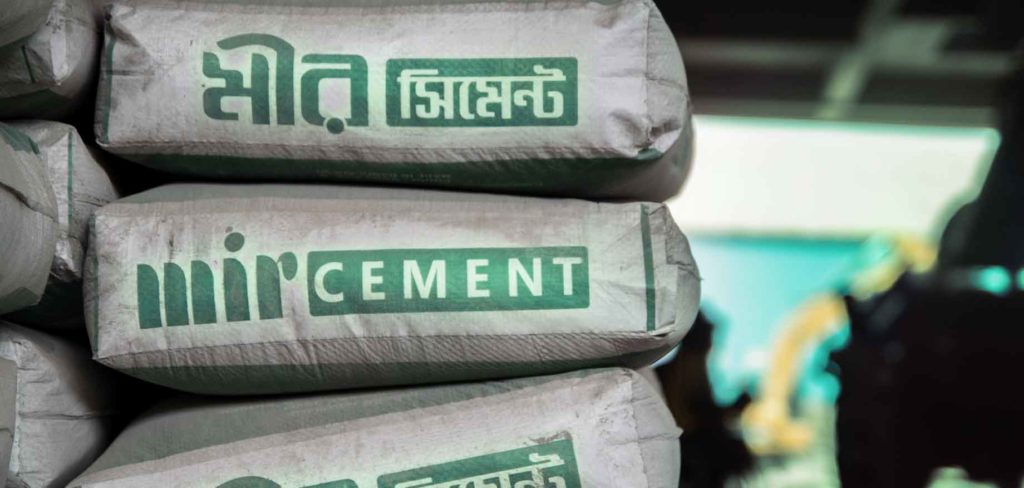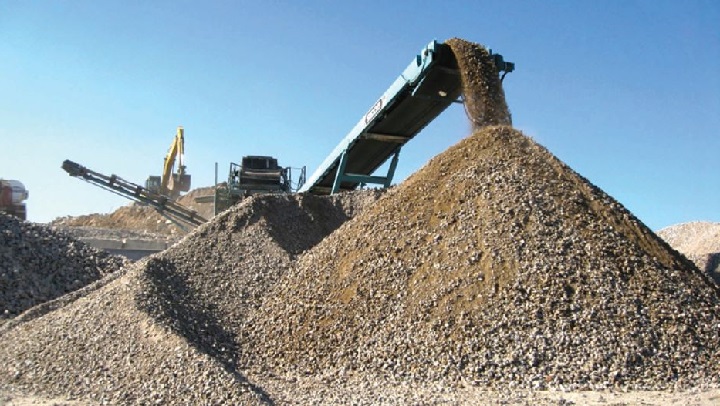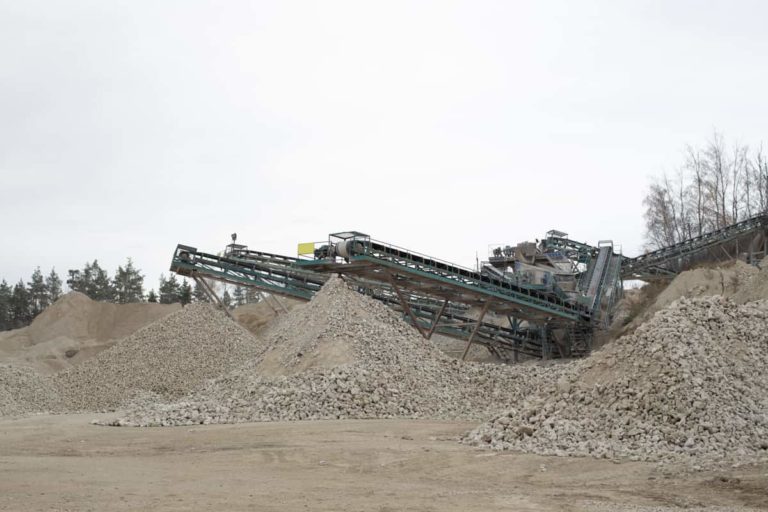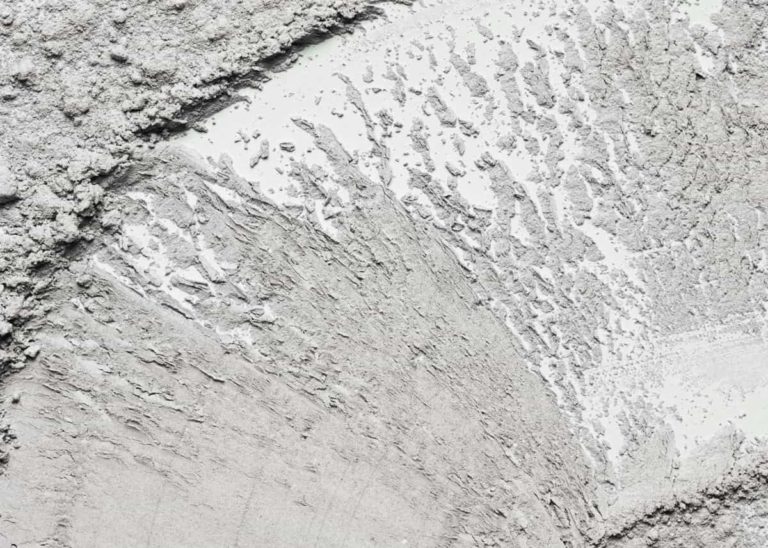How to Facilitate Storage and Handling of Cement and Aggregates
The quality of cement plays a crucial role in the structure’s integrity. Good quality cement ensures the project remains up to the mark and delivers the performance according to your expectations. After purchasing the best cement in Bangladesh for your construction work, you must ensure that it is stored and handled correctly. Furthermore, manufacturers send cement to suppliers who store it in warehouses. A massive amount of cement bags is stored in these facilities. Following standard precautions for the storage of cement and aggregates, such as duration and place of storage, arrangement, moisture, temperature, etc., will determine the condition of cement. Poor storage conditions and handling methods can ruin the properties of cement and can severely affect the integrity of your construction project. Cement should be used within three months from the manufacturing date, and it can absorb moisture from the air, which hardens it into a stone-like substance. Once the hardening has been set, the cement can no longer be used for construction purposes. So, supervising the storage facility and handling methods can safeguard your investment and save additional costs. Ensuring good storage and handling of cement and aggregates can protect these from environmental hazards and guarantee their long-lasting properties.
Why it is Important to Enable Proper Storage and Handling of Cement and Aggregates?
Cement is a very sophisticated product that can easily damage environmental factors. It is imperative to store cement well to make sure its quality does not get degraded. If cement is not stored correctly, it can absorb moisture from the air and start a hydration reaction. It starts the binding process in cement and creates lumps that degrade the cement’s strength. If enough moisture is absorbed, the whole cement batch can be ruined.
Prolonged storage of cement can also ruin its properties. It can decrease its binding properties and strength and make it coarser. Furthermore, the amount of water required to create a neat cement paste of standard consistency will also increase, disrupting the setting time of cement.
Aggregates should also be stored properly. Otherwise, segregation will start if stored incorrectly. Poor quality aggregates can negatively impact the strength formation of concrete.

Storage of Cement
There are some fundamental rules for storing cement. Following some precautions can decrease the chances of occurring damage to cement products. The following scenarios can be dealt with in storing cement.
Moisture at the Place of Storage Facility
Moisture content or dampness is the biggest foe of cement. It can ruin the whole product. Even the moisture in the air can spoil the cement. Cement should be carefully stored so that it does not get exposed to the moisture in the environment. Airtight bags can help in this case. The absorption of moisture also depends on the category of cement. Finely grained cement can easily absorb moisture from the air. So, extra precautions should be taken to protect high-quality finely-grained cement. Moisture in cement can be tested with equipment. If it shows a reading of more than 5%, it cannot provide exemplary performance in construction. Extra precautions should be taken in places where humidity is high. During the humid season and in coastal regions, the moisture in the air is much higher, which can damage cement if not stored correctly.
Moisture can also enter cement from the ground. The ground soil contains a high density of moisture. If cement is directly placed on the ground, it can absorb moisture from it, damaging it. It is recommended to place cement bags 150mm to 200mm above the ground on platforms made by planks or other materials. The platform should also be covered with an impermeable plastic sheet. However, if the platform is made of plastic, no covering will be required.
Cement should be stored away from the sidewalls of storage facilities. Sometimes the inside of walls can get damp due to leakage or poor construction. These walls can transform moisture if cement bags are in contact with them. It is recommended to maintain a 600mm distance from sidewalls.
Source: The Constructor
The Extent of Cement Storage
Due to cement’s sophisticated nature, it has a limited lifespan. If the time of storage lengthens, it can reduce the strength of the cement. It is preferred to use cement from three months of its manufacturing date. However, if cement is stored for more than three months, you should test its strength before using it in construction. Reduced strength of cement can pose a severe risk to the integrity of the construction project. So, it is always recommended to use cement before its manufacturing crosses three months. However, the Vibro Grinding process can increase the strength of cement. If the cement has been in storage for more than three months, Vibro Grinding can increase fineness quality, making it suitable for construction works.
Condition of Storage Facility
Cement bags should not be stored in open places. Cement warehouses are specially designed to store cement. Proper shedding allows for storing cement for more extended periods. These specifically designed cement warehouses consist of waterproof floors, roofs, and walls. These storage places should have small windows and airtight doors. A sound drainage system will allow water to pass away both inside and outside if required. Cement bags are generally packed in 50KG. Twenty bags of cement will require one-cubic meter of space. Based on these numbers, cement storage facilities can be designed.
Special care should be taken to protect the cement bags during the monsoon season. Heavy rainfall increases the humidity in the air, which is the biggest foe of cement. So, waterproof membranes should cover all stacks during the monsoon. The cover should be 700 gauge or .175mm in thickness. The plinth level of the warehouse should be higher compared to the surrounding location, which will make sure no water can accumulate inside.
Cement bags should not be stored in the basement of any storage facilities. Preferably the storage should be done on the first floor or higher. The entry to the storage facility should have an inclined slope, which prevents certain pollutants from entering from the roads.
Source: Screed Scientist
Stacking of Cement Bags in Warehouses
Cement bags should be stored so that it becomes easier for workers to stack and remove bags when required. The stacking method should allow people to move freely inside to maneuver bags for stacking, removing, and inspection purposes. A passage of 600m space should be enough for easy access in between piles. Furthermore, cement bags should be stacked stepwise on a raised platform made of a plank or other materials. Cement bags should be placed in a balanced way so that the bags do not topple on one side. Each stack should not consist of more than ten bags. These stacks can be covered with waterproof layers like plastic sheets to provide long-term protection.
In the stacks, cement bags must be placed adjacent to each other to reduce air circulation. Cement is a hygroscopic material that wants to absorb moisture from the air. Reducing airflow between bags is an excellent way of storing cement for extended periods.
Withdrawal of Cement Bags from Warehouses
An ordered arrangement of cement bags will ensure efficiency in storing and handling. First in, first out procedure should be followed in cement storage facilities.
Cement is a time-sensitive product. It should be used within three months of the manufacturing date for gaining maximum performance. So, knowing the manufacturing date is very important as the bags kept for the longest time should be removed first. Labeling showing the manufacturing date can help to sort the bags out quickly.
It is not recommended to remove bags from the top layer. Instead, bags should be removed from two or three layers in a stepwise manner so that the balance can remain and not topple over.
Sometimes the bags in the bottom develop a “warehouse pack/lump” due to extreme pressure. It can be eliminated easily by rolling the bags when the cement is taken out for use.
Protecting from Pollutants
Cement bags should not be placed together with other products like fertilizers. Any contamination can ruin the quality of cement. Furthermore, different types of cement should be stacked separately.
It is always recommended to use bags that are opened first. If cement is placed on the ground for use purposes, pollutants can get mixed up. Ideally, opened cement should be re-bagged in plastic or heavy-duty garbage collector bags, and they should be sealed securely. This process can reduce the chances of pollutants entering the cement.
Handling of Cement Bags
Transportation and handling of cement bags are considered one of the most physically demanding jobs performed manually by people. Cement being a susceptible and vital product for construction works, extra precautions and care should be taken while dealing with cement bags. There are many precautions to be taken during the transportation of cement bags. Furthermore, there are many rules for handling cement bags as well. If not followed correctly, it can severely injure or even cause death to workers.
Additionally, if cement gets contaminated or damaged while handled inappropriately, the structure’s integrity built with the cement can also become compromised. As a common practice, cement bags are temporarily stored on-site during a project’s construction phase. Prudent transportation methods and handling techniques must be maintained to avoid any discrepancies.
Some basic precautions should be followed to properly handle cement bags which can reduce wastage and save cost.
- Sometimes workers unload cement bags from trucks or other vehicles. Dropping cement bags from head heights can severely damage the bags. Any breakage will result in the wastage of cement. So, bags should not be dropped from a height.
- Cement bags should be picked up from the bottom side of the bag. Cement bags should not be pulled over from the ground. Pulling the bags might cause a tear in them, which can cause wastage of cement. Furthermore, microtears will introduce moisture inside the cement, creating lumps, making the cement useless.
- Cement bags must be rolled over before lifting. Rolling over can slacken off the consolidated cement inside the bag and reduce the chances of breaking cement bags. This process also aids in checking the underside of the bag for any indication of damage. Thus, lowering the possibility of accidentally wasting cement.
- Cement bags are generally 50KG. For the safety of the worker, they should be meticulous while lifting these bags. Inappropriate posture can damage the spine, introduce back pain, and compromise the health condition of workers. Anyone handling the cement bags should be well trained to avoid these dangers. Two workers should be working together to move one cement bag if possible. The bags should be carried at waist height or flat on the shoulders.
- It is not recommended to hold the cement bags from their edges. It can cause extreme stress to the arms and introduce breakage in the middle of the cement bags, rendering them useless.
- Sometimes workers walk on top of the bags to reach the cement bags stored away. It is highly discouraged as it can damage the bags.
- It is recommended to use trolleys to reduce stress on workers while handling cement bags, even if it is for short distances. The bags should be placed securely on the trolley to reduce the chances of dropping them while moving.
- For ease of carrying, workers sometimes use hooks to facilitate lifting. Using hooks is a banned technique, which can damage the cement. Cement bags now print the “No Hooks” sign on their bags to eliminate the usage of hooks. Using hooks creates punctures in the bags, exposing the cement to the atmosphere. Hence, workers should use trolleys instead of hooks to handle cement bags.
- Workers should be wearing protective gloves, goggles, clothing, and respirators as cement is a very fine powdery product. It can create a lot of dust which is harmful to the human body.
Storage and Handling of Aggregates
Aggregates are an essential part of any construction site. Aggregate is a category of coarse or medium-grained materials like sand, gravel, crushed stone, recycled concrete, and geosynthetic aggregates. The quality, size, and shape of the aggregates can play an influential role in the strength of the finished concrete. Following proper storage and handling rules will allow aggregates to remain in perfect condition.
Space
It requires a lot of space for storing aggregates. However, the amount of space depends on what kind of delivery system your construction project is opting for. If small deliveries are taken daily, minimal space will do the work. If a large amount of delivery is made, ample space is required to store aggregates. It should be segmented from the rest of the site to maintain a clear construction site. A covering membrane will provide extra protection to aggregates as rainfall or wind can wash away some materials.
Accessibility
The storage area of aggregates should be easily accessible to transfer aggregates across the construction site. Sometimes machinery blocks the path for easy access to specific paths of the construction site. So, aggregates should be placed where all parts of a construction project can access it.
A Flat Space
Aggregates should be placed on hard, flat, and level grounds. Keeping the ground surface moisture free and clean from pollutants is recommended. A separate platform can be built where aggregates are stored if a dry surface is unavailable on the construction site. The platform should be covered with plastic sheets to protect it from dampness. The mixer should be placed near the aggregates. Loam or grass surfaces should be avoided.
Segmentation
If your construction project demands different kinds of aggregates, it is recommended to place them in separate places to avoid contamination. Ideally, aggregates of different classes should be walled off. If not possible, using timber to create boundaries is suggested.
Coarse and fine aggregates should be kept at a distance from each other. Extra care should be taken to store fine aggregates like sand which can be blown away easily with the wind. In windier areas, a separate structure can be built to protect it.
For stacking, a pyramid structure is recommended. However, a pyramid structure should be built too high. Building separate stacks are suggested if many aggregates of the same type are required.
Moisture Control
Different types of aggregates require varying levels of moisture control. So, experts can decide which category of aggregates needs what kind of moisture control. Keeping separate aggregate structures will allow for an easier inspection of aggregates.
Receiving and Unloading Aggregates
Receiving aggregates properly can reduce a lot of hassle. Aggregates should be directly unloaded on the storage place to minimize wastage and ensure proper handling. A truck dump method discharges loads in a way that keeps them tightly joined together, minimizing loss. Unloading from high grounds should be avoided as the wind can scatter finer particles. The construction site should be cleaned before receiving the delivery of aggregates.
Source: Civil Blog
Summary
Cement is used to make concrete, mortar, etc., fundamental parts of any structure. Using good quality cement and aggregates can save you many repairing costs in the future. So, taking precautions in the storage and handling of cement and aggregates will allow your construction work to run more effectively while ensuring safety measures for workers.
Frequently Asked Questions (FAQs)
What is the best storage system for cement?
Ans: If you can keep cement away from moisture and heat, it should be okay. So, try to store cement in a dry storage place.
Why do I need to store cement?
Ans: Purchasing bulk cement bags can reduce the cost. So, storing cement on-site can reduce recurring transportation costs. So, a cement storage facility is helpful for construction.
How long can I store cement?
Ans: If you can keep cement away from moisture, you can store cement for three months. Storing any longer than that will reduce its maximum strength gain.
Is it okay to use old cement?
Ans: It is not recommended to use old cement as it cannot provide maximum strength.
What to do if cement and aggregates get accidentally wet?
Ans: Once the cement is wet, it cannot be used for construction purposes. However, different types of aggregates can sustain different levels of moisture. So, seek advice from experts if aggregates get accidentally wet.







